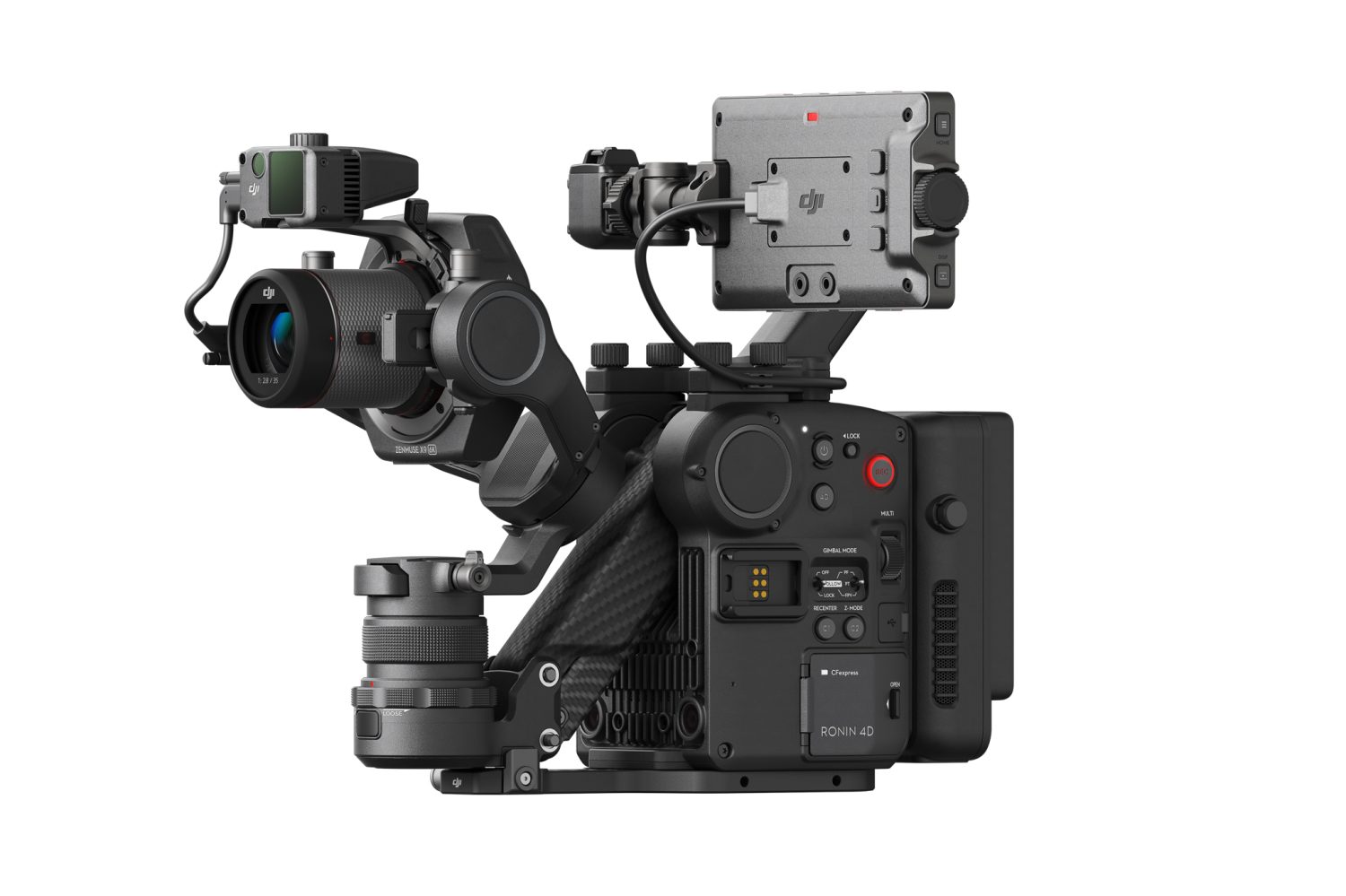
Proving once again it’s a tech company that just happens to be a world leader in drones, DJI today released its professional-grade DJI Ronin 4D cinema camera, featuring (among a slew of other things) a full-frame Zenmuse X9 gimbal camera, 4-axis stabilization system, and an Apple-style LiDAR focusing system.
Make no mistake about it: This Ronin 4D camera was created with the needs of cinema pros and the hardest of hard-core amateur film makers in mind. The Zenmuse X9 gimbal camera – available in 8K and 6K version – is intended to deliver top-drawer quality footage, supporting up to 6K/60fps and 4K/120fps respectively. The system includes the commonly used H.264 codec, along with Apple ProRes and ProRes RAW alternatives to provide greater flexibility in editing. The Ronin is equipped with an interchangeable lens mount allowing connection to DJI, Leica M, and other gear for greater flexibility in shooting with lenses of differing tech and era specs.
In its release Wednesday, DJI said cinematography professionals from around the world were consulted during development of the Ronin 4D, and provided feedback after testing loaner prototypes (quite possibly where the flurry of recent photo leaks of DJI cameras in the wild came from). Toting gear shaped by and created for that kind of crowd isn’t going to come cheap, of course. The 6K Ronin 4D runs $7,199, and the 8K version costs $11,499.

In exchange, users will get a whole lot of a lot.
Ronin 4D: a camera doubling as DJI’s definitive cinematic checklist
The camera boasts what DJI calls the industry’s first active-vertical four-axis stabilization system. That, the company promises, effectively eliminates sideways shake, and will allow operators to shoot in even tight or tricky settings while walking, running, or moving abruptly without having to previously practice shots or relying on third-party equipment for stability.
Another leading – and pretty awesome – feature of the Ronin 4D is its integrated LiDAR range sensor, designed to automatically and instantaneously maintain quasi-perfect focus in even the most dynamic of situations. It does so by firing over 43,200 ranging points on objects up to 10 meters away to determine exact distance data needed to keep images sharp, delivering those results even in low-light environments. The LiDAR application is paired with manual, auto, and DJI’s patented Automated Manual Focus modes, leaving filmmakers complete freedom in how various scenes are shot.
“DJI empowers creators with accessible and intuitive devices to capture and share the world exactly how they see it,” said Paul Pan, DJI senior product line manager. “With DJI Ronin 4D, we use the power of technology to make cinema-standard production more affordable, cinema cameras more flexible, and cinematic imaging available to a boundless array of filmmakers. DJI Ronin 4D draws on our expertise in both aerial and ground-based cinematic innovations to enable the next generation of professional content creators to amaze and inspire us.”
Also on offer is a 4D video transmitter outputting a 1080p/60fps feed to remote monitors, and with a range of up to nearly 20,000 feet. That feature includes bit encryption to protect the security of video sent, and smooth, low latency streaming of footage at the instant it’s being taken.
The camera offers four storage possibilities – USB SSD, CFexpress Type-B card, DJI’s proprietary PROSSD 1TB method. It features built-in microphones for 2-channel 24-bit audio, and provides two 3.5mm jacks and two XLR ports for additional input and output devices. Ronin 4D operates using the same TB50 Intelligent Battery of the earlier Ronin 2 and Inspire 2 drone, enabling up to 2.5 hours of shooting time.
In addition to representing a remarkable cinematic development coup, the Ronin 4D’s release is a pointed industrial and strategic push-back by the purported “drone company.” With that new, seriously slick movie hardware, DJI stands to make significant inroads in a film industry long dominated by reputed technology groups like Sony that, of late, have begun manufacturing UAVs.
FTC: We use income earning auto affiliate links. More.


Comments